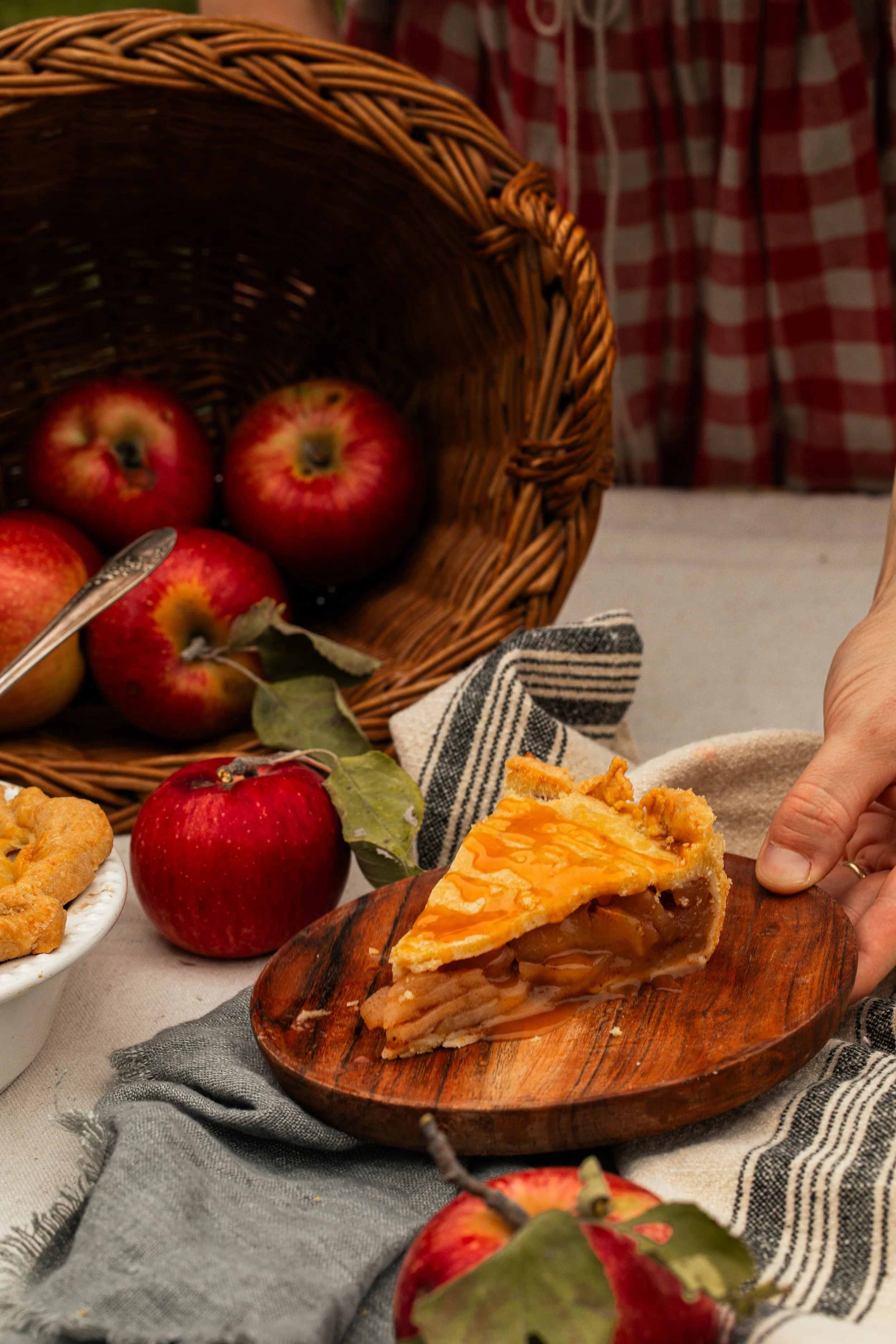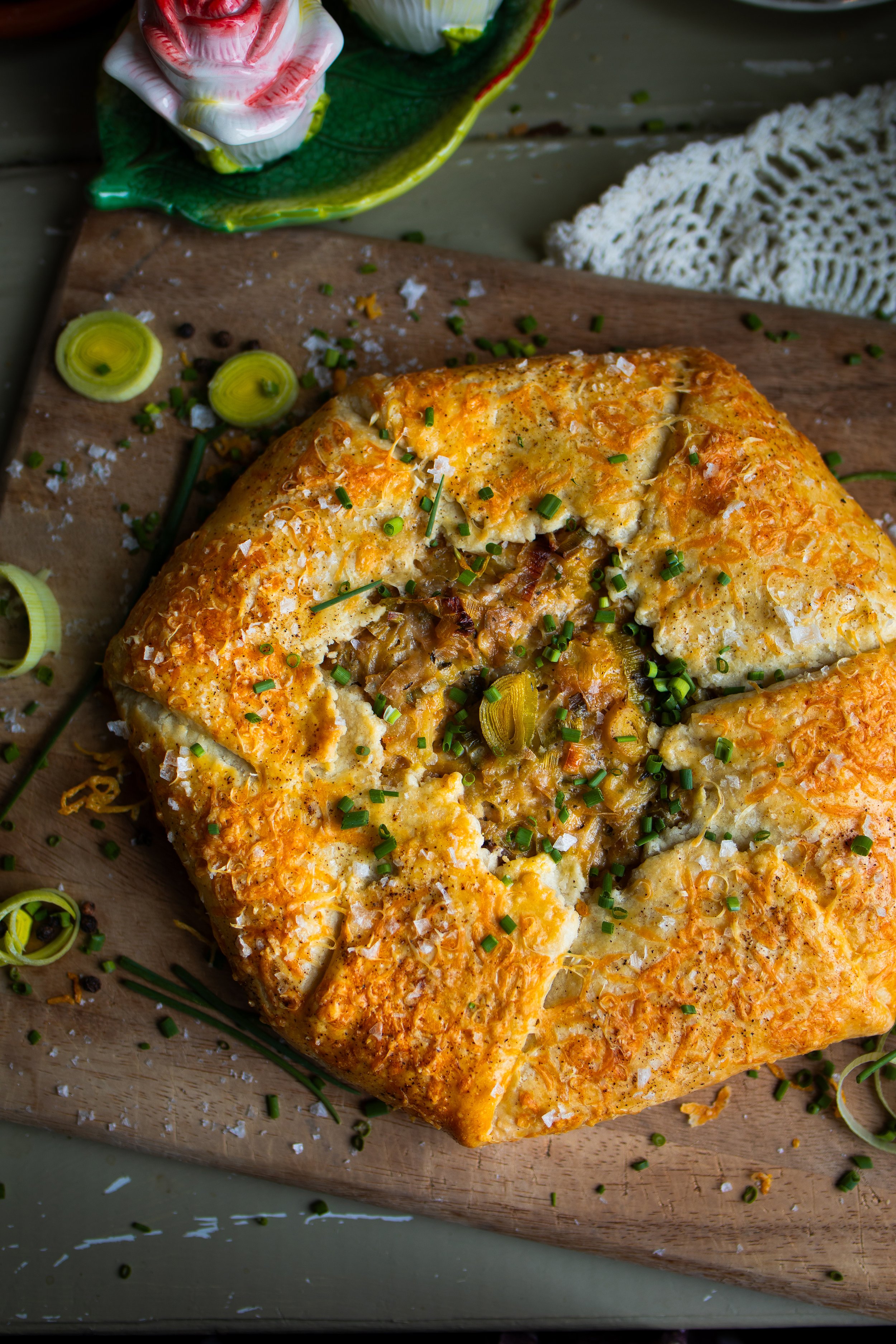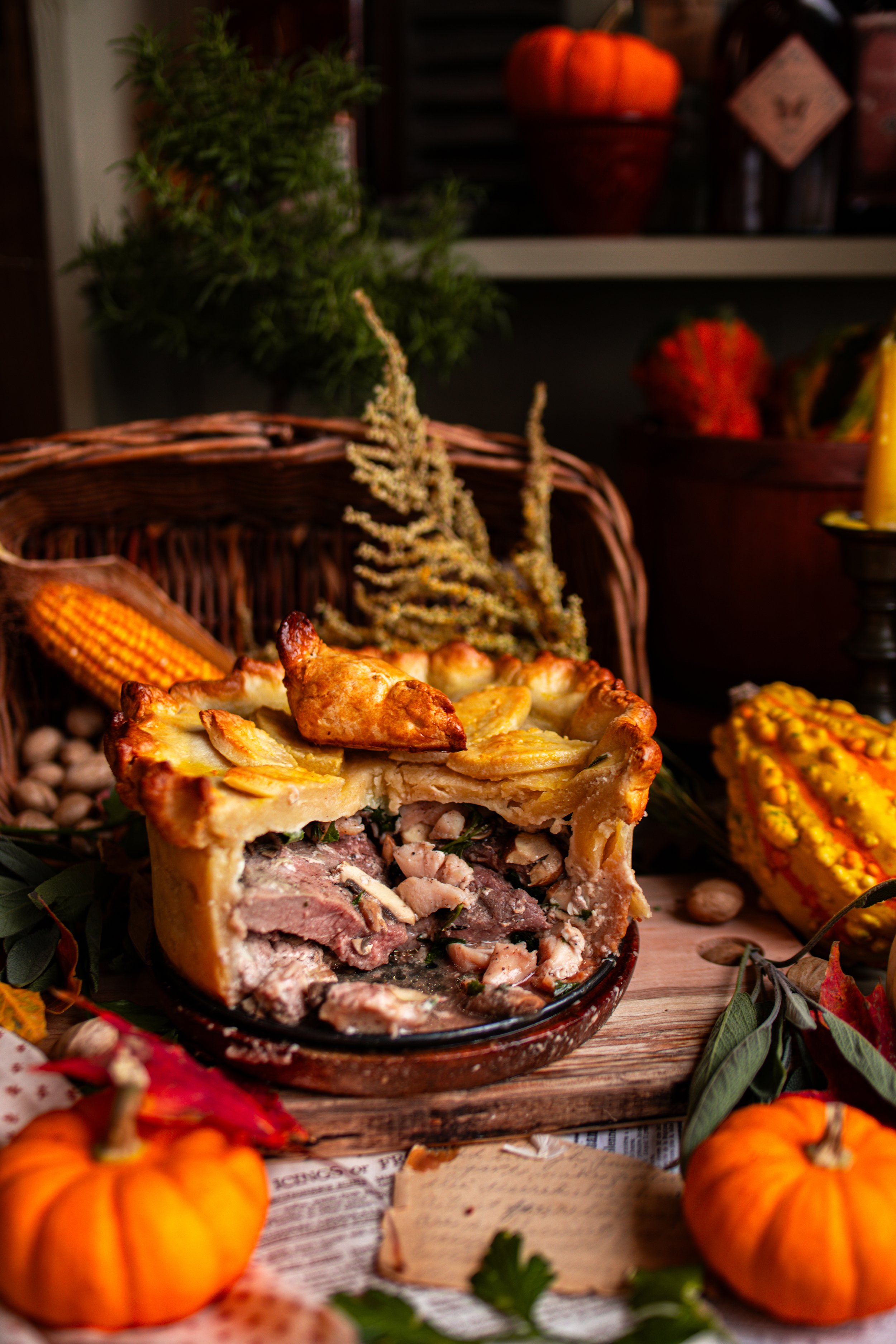Video: Baking an Apple Pie from the 18th Century
This post may contain affiliate links, please see our privacy policy for more information.
Happy autumn to you, Dear Reader!
Today I am sharing with you a historical recreated recipe from a few of my favorite historical cookbooks. I decided that I wanted to give myself a real shot at creating videos for our Youtube channel, and what better way to begin than by experimenting with vintage recipes. I have always wanted to spend more time trying to recreate recipes from the past rather than trying to adjust them to my modern tastes. It’s not an easy thing for me to do, I must admit! Rather than have everything turn out absolutely perfect every time, I thought that our Youtube channel might be the place for me to have a little fun and try new things, even if they don’t turn out.
In this episode, which you can watch below, I am making an apple pie inspired by recipes from 1796, 1805, and 1879.
apple pie in history:
Apple pie has been around for thousands of years, so by the time we have reached the late 18th century and mid to late 19th century, this autumnal dessert is quite comforting and familiar. The only difference between pie then and pie today is the type of crust, at least from what I read!
Pies began as savory in the Middle Ages, and over time, sweet ingredients like fresh and dried fruit began being added as fillings. Apples are native to central Asia and were introduced to North America by the Pilgrims who settled in Massachusetts in the 1620s. I love learning facts like this because I feel like apples are such a staple to American cuisine, mainly in the fall but really any time of year. After traveling to New York recently, I learned that apples are a major crop in New England and they grow in the area incredibly well. As a former commercial and now hobby farmer, I have a bizarre interest in learning about each state’s most popular crops.
It was in 1796 that Amelia Simmons published the first American cookbook, American Cookery, which features two apple pie recipes.
the sources:
BOOK NO. 1: AMERICAN COOKERY (1796); AMELIA SIMMONS
This is the first book that I looked in was Amelia Simmons’ American Cookery, which was written in 1796. That puts us right at the end of the 18th century, which can only tell us that the popularization of apple pie in the 1800s made complete sense. This was the first cookbook to feature ingredients native to North America, mainly by using them as ingredient substitutes for traditional English recipes. While we know now that apples were brought over from Europe in the 1620s, this would have been a crop that was familiar and comforting to the European settlers.
Amelia’s apple pie recipe goes like this:
In the cookbooks that I researched, “puff paste” is used for the pie crust, though it’s not always the same as the puff pastry we know today. Many of the recipes that I looked at sounded more like shortcrust or your standard pie crust recipe, where the butter is cut in. I did end up using this paste recipe for my pie, which turned out… interesting? You will just have to watch the video.
BOOK NO. 2: THE ART OF COOKERY MADE PLAIN AND EASY (1805); HANNAH GLASSE
This recipe was a little bit easier to follow and much more detailed! The part that I loved was the idea of using the peelings from the apples to make a simple syrup to pour over the pie filling. I decided to incorporate this element into my pie, which gave it a truly unique texture and flavor. The flavor was also altered by adding in rose-water, which was a popular ingredient for baking in the 1700s. Altogether, the flavor of the pie filling along was absolutely wonderful and definitely felt rustic!
BOOK NO. 3: HOUSEKEEPING IN OLD VIRGINIA (1879); M.C. TYREE
The third book that I looked at was published almost a century after Amelia’s book. This book was written by the granddaughter of U.S. Founding Father, Patrick Henry. It is also a community cookbook, with contributions from women all throughout the state of Virginia. With what we know of Marion Cabell Tyree being a Virginian socialite, with a few of the contributing recipes coming from Mrs. Robert E. Lee and Mrs. John J. Slaughter, this book was very obviously influenced with recipes from the kitchens of uncredited Black women. I think that this book is incredibly rich with history, and it is worth doing a deep dive on if you are interested! There are over 1700 recipes inside, and they are quite interesting.
the method:
For this pie, I decided to recreate the Puff Paste No. 3 from American Cookery. This included the part of rubbing in half of the eggs and rolling in the rest. This did not work!
Because I only wanted to make a single pie, I guessed at the measurements and compared them with my own pie crust measurements to create a top and a bottom. This worked out to be only two eggs rather than a half dozen.
The filling is a combination of all three recipes, spiced with the traditional 18th century spices like nutmeg, cinnamon, and cloves. I also used homemade rose-water and created a syrup with the apple peelings to drizzle in before baking.
It baked in the same amount of time as usual, about 1 hour at 350° F (177° C).
final thoughts:
The pie was actually really good! The crust was the only part that I was not incredibly excited about. It was a bit bland, though it still had the crumbly/flaky aspect as the crusts that we are used to eating today. The eggs gave it a bit more of a cookie-like texture. What it needed was some salt or sugar, and it would have been perfect!
For this experiment, I was trying to not alter the ingredients too much so that I could really experience a taste of the past. I hope that you enjoyed reading a little about this historically inspired apple pie and watching my video.
xoxo Kayla
Apple Pie with Sweet Syrup: 18th Century Inspired Recipe

Ingredients
- 1 cup fresh rose petals
- 2 cups (480 ml) hot water
- 2 1/2 cups (325 g) all-purpose flour
- 1 cup (232 g) salted butter, cold and cut into cubes
- 2 large eggs
- 2 1/2 lbs (1.13 kg) fresh apples, peeled, cored, and sliced thinly (save the peelings!)
- 1 to 2 tbsp (15 to 30 ml) lemon juice
- 3/4 cup (150 g) granulated sugar, divided
- 3/4 tsp grated nutmeg, divided
- 10 cloves, crushed
- 1 tsp ground cinnamon
- 2 tbsp (30 ml) rose water
- 1 large egg + 1 tbsp water, for egg wash
Instructions
- In a small saucepan, bring the water to a boil.
- Place the rose petals into a medium bowl. Pour the boiling water over the petals and let it steep for at least 30 minutes and up to several hours. Let it come to room temperature before using in the pie recipe.
- Strain out the rose petals and store the rose water in a container with an airtight lid in your refrigerator for up to one week.
- In a large bowl, add the flour. Cut in the butter with a pastry blender, fork, or your hands. Continue to blend until it forms large crumbs, about the size of a pea.
- Add in the eggs, rubbing them into the butter and flour mixture with your fingers. It will be a bit sticky at first, but it should come together into a soft dough.
- Shape the dough into 2 discs and wrap the discs in plastic wrap. Store the dough in the refrigerator for at least 1 hour and up to 3 days.
- When ready to bake, roll out one of the crusts on a lightly floured surface to 12-inch (30-cm) diameter circle. Roll the crust up over your rolling pin. Then, pick up the pin by the ends and transfer the crust to your pie pan.
- Gently press the crust down into the pie pan and trim the edges, leaving a 1-inch (2.5-cm) overhang. Fold the overhang under to create a clean edge and flute the edges with your fingers, or create a cute little wave around the edges of the pie. You could also press down the edges with the tines of a fork. Poke holes all along the bottom of the crust with the tines of a fork.
- Store the shaped pie in the fridge until ready to fill.
- Preheat your oven to 350° F (177° C).
- In a large saucepan, warm the apples and lemon juice until they are just softened, stirring occasionally, about 5 minutes.
- Meanwhile, in a small saucepan, combine the apple peels and cores with 1/4 cup (50 g) of the sugar and 1/4 teaspoon of the nutmeg. Cook over medium-low heat, stirring continuously, until the peelings begin to emit some juice. If needed, add 2 to 3 tablespoons (45 ml) of water to create a thick syrup. This should take about 8 to 10 minutes. Strain out the syrup, creating about 2 tablespoons (30 ml) worth.
- In a large bowl, combine the softened apples, apple syrup, remaining 1/2 cup (100 g) of sugar, remaining 1/2 tsp of nutmeg, cloves, cinnamon, and rose water. Stir until everything is evenly coated, about 2 minutes.
- In a small bowl, whisk together the egg and water. Brush this all over the pie shell.
- Arrange the apple filling in the pie shell. Then, roll out the second crust to a 12-inch (30-cm) diameter circle. Place this crust over the pie and cut a few slits in the top to allow air to escape while baking. Trim the edge of the crust and press the two crusts together, fluting the edge with your finger and knuckle.
- Brush the top of the crust with the egg wash. Then, bake the pie for 60 minutes or until the crust is golden brown and the filling is bubbly. Allow the pie to cool for at least 1 hour before slicing and serving. I believe it is best after 2 to 3 hours resting.















